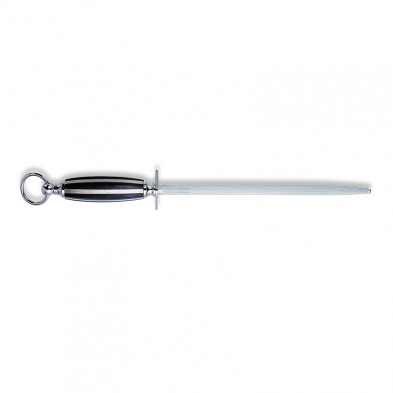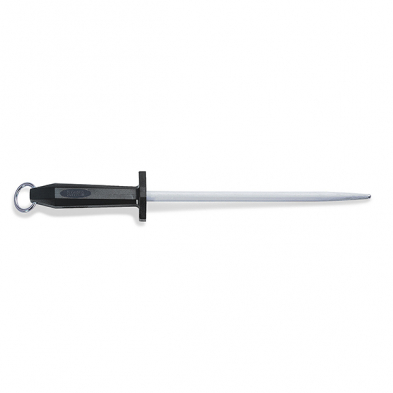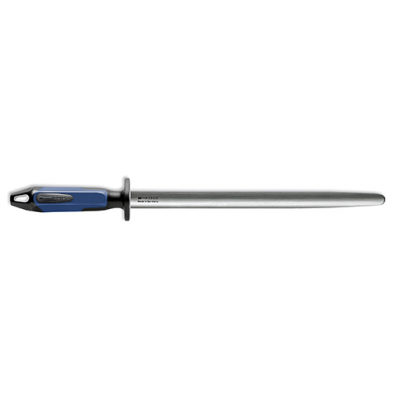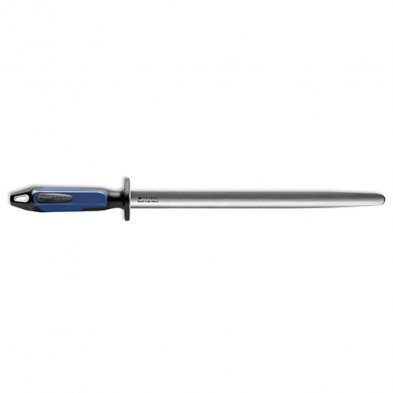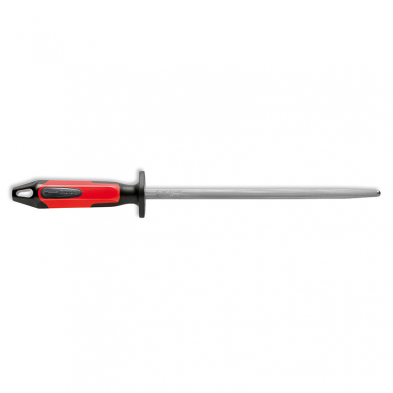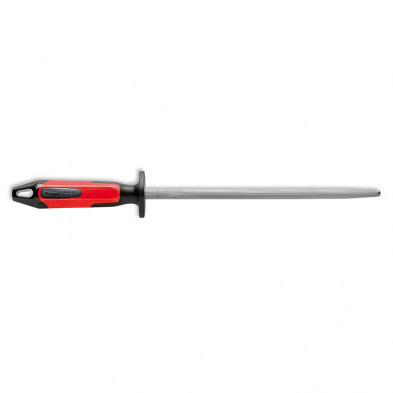
Understanding how to use a sharpening steel is essential for anyone who uses knives, whether you're a professional chef or a home cook. This guide aims to comprehensively understand the techniques and best practices for using sharpening steel effectively. Proper technique is not just a matter of skill; it's a necessity for maintaining the longevity and performance of your knives.
Why Proper Technique Matters
Using sharpening steels correctly is crucial for effective knife maintenance. A poorly executed technique can lead to uneven sharpening, reducing the knife's effectiveness and potentially causing accidents. Moreover, improper use can wear down the blade faster, leading to more frequent replacements.
Consistency in technique is vital, whether you're in a professional kitchen or your home. A well-maintained knife makes cutting easier and ensures that your food preparation is efficient and safe. Friedr. Dick, a renowned name in kitchen tools, emphasizes the importance of proper technique in using their high-quality sharpening steel.
Tools You'll Need
Before you begin, it's essential to gather the necessary tools. At the very least, you'll need a good-quality sharpening steel and a knife. If you're looking for recommendations, Friedr. Dick offers a range of sharpening steels known for their durability and effectiveness.
Each tool serves a specific purpose. The sharpening steel is used for honing the knife's edge, while the knife itself is what you'll be sharpening. Ensure both are clean and in good condition before starting the sharpening process.
Step-by-Step Guide: How to Use a Sharpening Steel
Using a sharpening steel effectively involves steps that must be executed precisely. Start by holding the sharpening steel vertically on a stable surface.
Handling a sharpening steel is not that difficult with a little practice. Place the knife blade at a 15° - 20° angle on the sharpening steel and slide the blade alternately to the left and right along the steel. Having the same number of sharpening movements on both sides is important. The sharpening movement has to begin with the end of the knife blade at the tip of the sharpening steel and be guided in a wide arc whilst applying light pressure to ensure that it ends with the tip of the knife close to the sharpening steel handle.
Hold the sharpening steel away from the body at an angle
Place the sharpening steel vertically on a surface
It is important that you alternate the side of the knife that comes into contact with the sharpening steel. You should never first move one side of the blade and then the other side of the knife several times along the sharpening steel; otherwise, a curved burr will form towards the other side of the knife, remaining after the last sharpening movement. However, only a very fine burr forms with alternate sharpening (also known as a thread), which is removed by bending it back and forth. It is vital to apply less and less pressure towards the end of the alternate sharpening movement to ensure that the fine burr becomes weaker and weaker.
Alternate the side of the knife that comes into contact with the sharpening steel. This is crucial for avoiding the formation of a curved burr, which can affect the knife's performance. Following these steps, you'll achieve a finely honed edge that enhances your knife's cutting abilities.
Common Mistakes to Avoid
Several common mistakes can adversely affect your knife's performance when using sharpening steel. One such mistake is using the wrong angle when honing the blade, leading to uneven sharpening. Another common error is applying too much pressure, which can wear down the blade prematurely.
Avoiding these mistakes is crucial for effective knife maintenance. Always alternate the side of the knife that comes into contact with the sharpening steel. This ensures that a very fine burr, also known as a thread, forms, which can be easily removed by bending it back and forth.
Our Tips for Effective Sharpening
For the most effective sharpening, we recommend frequent, short sessions before or after each use of your knife. This proactive approach ensures that your knife's cutting performance remains optimal. Waiting until you notice a decline in performance is not advisable.
Friedr. Dick suggests straightening the cutting edge by frequent, short sharpening for best results. This practice especially benefits those who use their knives extensively, such as professional chefs. The key is to apply less and less pressure towards the end of the alternate sharpening movement, ensuring that the fine burr weakens and is easily removed.
OUR TIP
STRAIGHTEN THE CUTTING EDGE BY FREQUENT, SHORT SHARPENING BEFORE OR AFTER EACH USE. DO NOT WAIT UNTIL YOU FEEL THAT THE CUTTING PERFORMANCE OF YOUR KNIFE IS POORER.
Understanding how to use a sharpening steel effectively is crucial for anyone who uses knives regularly. Whether you're a professional chef or a home cook, the techniques outlined in this guide can significantly enhance your culinary experience. So why wait? Start practicing these techniques today and unlock the full potential of your knives.
Frequently Asked Questions:
-
What is the correct angle for using a sharpening steel?
The ideal angle for using a sharpening steel is between 15° and 20°. This angle allows for effective honing without removing too much material from the blade.
-
How often should I use a sharpening steel?
For optimal performance, it's recommended to use a sharpening steel before or after each use of your knife. Frequent, short sessions are more effective than waiting for the knife to become noticeably dull.
-
Can I use a sharpening steel on all types of knives?
Most types of sharpening steels are suitable for a wide range of knives. However, some specialized types are designed for specific materials or knife series.
-
What is the difference between honing and sharpening?
Honing maintains an already sharp edge, while sharpening involves removing material to create a new edge. A sharpening steel is primarily used for honing.
-
Is it necessary to clean the sharpening steel after use?
Yes, wiping down the sharpening steel with a damp cloth after each use is advisable to remove any metal filings and maintain its effectiveness.
-
How do I know when I've honed the knife sufficiently?
You'll know you've honed the knife sufficiently when it glides smoothly through paper or easily slices through a tomato without crushing it.
-
Can I use oil or water with a sharpening steel?
Generally, there's no need to use oil or water with a sharpening steel. It's designed for dry use, and adding lubricants can make the process messy and less effective.
-
What materials are commonly used in a sharpening steel?
Sharpening steels are commonly made from high-carbon steel, but ceramic and diamond-coated variants are also available.
-
Is a sharpening steel suitable for serrated knives?
Sharpening steels are not recommended for serrated knives. These types of knives require a specialized sharpening technique.

